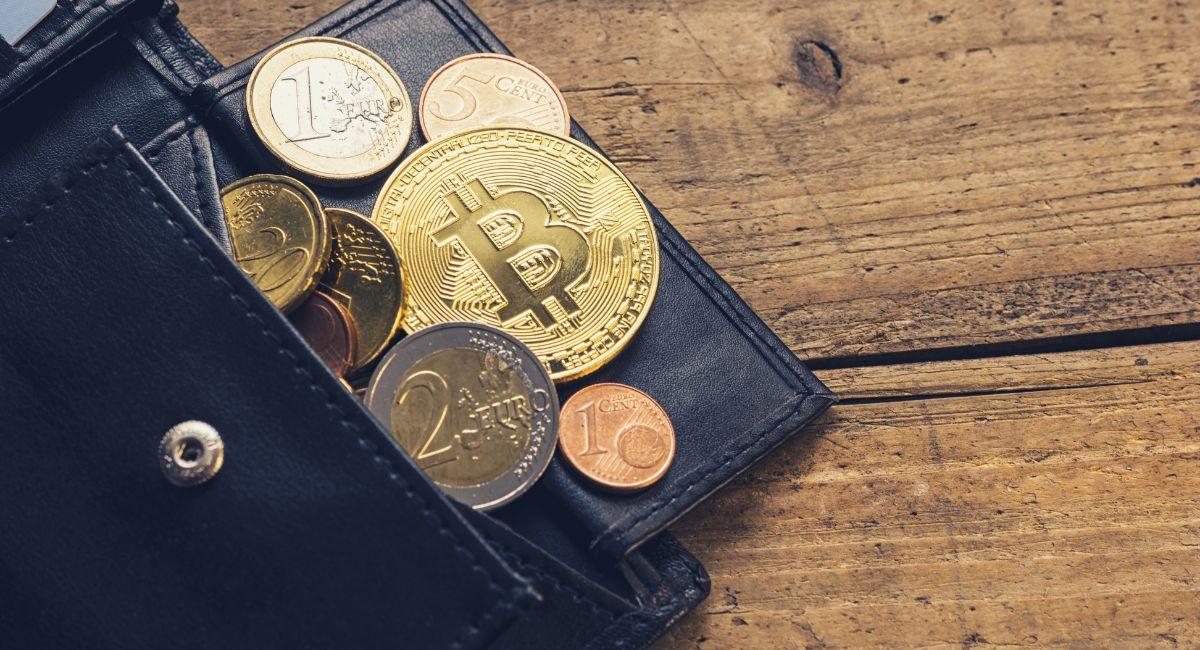In the vast and ever-evolving landscape of cryptocurrencies, one term that frequently surfaces is “mainnet.” But what exactly is a mainnet, and why does it hold such significance in the realm of digital currencies? Let’s embark on a journey to unravel the intricacies of mainnets and their pivotal role in the cryptocurrency ecosystem.
Defining Mainnet:

A mainnet, short for “main network,” refers to the primary blockchain network where transactions of a particular cryptocurrency take place. It is the operational blockchain, as opposed to its counterpart, the testnet, which serves as a simulated environment for developers to test applications without using real assets. In essence, the mainnet is the live and fully functioning version of a blockchain.
Key Components of a Mainnet:
- Blockchain Protocol: A mainnet operates on a specific blockchain protocol, such as Bitcoin, Ethereum, or other emerging platforms. The protocol defines the rules and standards that govern the creation, validation, and confirmation of transactions within the network.
- Consensus Mechanism: Consensus mechanisms are the algorithms employed by blockchain networks to achieve agreement on the state of the ledger. Mainnets utilize various consensus mechanisms, such as Proof of Work (PoW), Proof of Stake (PoS), or Delegated Proof of Stake (DPoS), each with its unique approach to validating transactions and securing the network.
- Cryptocurrency: The native cryptocurrency of a mainnet is used as a medium of exchange for transactions within the network. For example, Bitcoin is the native cryptocurrency of the Bitcoin mainnet, while Ether is the native token of the Ethereum mainnet.
- Smart Contracts and DApps: Many mainnets, especially those built on the Ethereum blockchain, support the execution of smart contracts and decentralized applications (DApps). These programmable contracts enable self-executing agreements without the need for intermediaries.
Understanding how a mainnet works involves delving into the intricate processes that govern a blockchain network’s operations. Let’s break down the fundamental aspects that contribute to the functionality of a mainnet:
- Blockchain Architecture: At the core of a mainnet is its blockchain architecture. A blockchain is a distributed ledger that records all transactions across a network of nodes. Each block in the chain contains a list of transactions, and these blocks are linked together in a chronological order, forming an immutable and transparent record.
- Decentralization: Mainnets operate on a decentralized network of nodes, which can be individual computers or servers. Decentralization ensures that no single entity has control over the entire network, enhancing security, resilience, and censorship resistance. Nodes communicate with each other to maintain a consistent and shared ledger.
- Consensus Mechanism: To agree on the state of the ledger and validate transactions, it employ a consensus mechanism. Common mechanisms include Proof of Work (PoW), where nodes solve complex mathematical problems to add blocks to the chain, and Proof of Stake (PoS), where validators are chosen based on the amount of cryptocurrency they hold and are willing to “stake” as collateral.
- Transaction Verification: When a user initiates a transaction on the mainnet, it is broadcasted to the network. Nodes validate the transaction by ensuring the sender has the necessary funds and that the transaction adheres to the rules defined by the protocol. Once validated, the transaction is added to a block.
- Block Formation: Transactions that are validated by the nodes are grouped together to form a block. The process of creating a new block involves solving a cryptographic puzzle in PoW or selecting validators in PoS. This ensures that adding a new block to the blockchain is resource-intensive and helps prevent malicious actors from tampering with the transaction history.
- Block Propagation and Consensus: The new block is broadcasted to all nodes in the network. Nodes reach a consensus on whether to accept or reject the block based on the rules defined by the consensus mechanism. If the majority of nodes agree, the block is added to the blockchain.
- Mining (In PoW Networks): In PoW-based like Bitcoin, the process of solving complex mathematical problems to add a block is known as mining. Miners compete to find the solution, and the first one to do so gets the right to add the block and is rewarded with newly created cryptocurrency and transaction fees.
- Smart Contracts and DApps (Optional): Some mainnets, like Ethereum, support smart contracts and decentralized applications (DApps). Smart contracts are self-executing contracts with the terms of the agreement written into code. DApps leverage smart contracts to provide various functionalities without relying on a centralized authority.
- Security Measures: It employs cryptographic techniques to secure transactions and ensure the integrity of the blockchain. Public and private keys are used for secure transactions, and hash functions play a crucial role in linking blocks and protecting the integrity of the data.
- Protocol Upgrades: it is subject to protocol upgrades to address scalability, security, and functionality issues. These upgrades are typically proposed by the development community and require consensus among node operators for implementation.
In summary, a mainnet operates as a decentralized, transparent, and secure network where transactions are validated and added to a blockchain through a consensus mechanism. The combination of these elements forms the backbone of various cryptocurrency ecosystems, each with its unique features and functionalities. Understanding the inner workings of a mainnet provides insight into the principles that govern the broader blockchain technology landscape.
Importance of mainnet for users and developers
The importance of a mainnet extends far beyond its role as the operational backbone of a blockchain network. Both users and developers play crucial roles in and derive significant benefits from the existence and proper functioning. Let’s explore in detail the importance for each group:
Importance for Users:
- Secure and Trustworthy Transactions: Mainnets ensure the security and transparency of transactions. Users can have confidence in the integrity of the system, as the decentralized nature of mainnets minimizes the risk of fraud, manipulation, or interference from a single central authority.
- Ownership and Control: By using a mainnet, users have direct ownership and control over their digital assets. They hold private keys that grant access to their funds, and transactions are executed through consensus mechanisms that rely on the distributed network of nodes, eliminating the need for intermediaries.
- Financial Inclusion: Mainnets contribute to financial inclusion by providing users with access to a global, decentralized financial system. Users from any part of the world can participate in transactions, investments, and other financial activities without the need for traditional banking infrastructure.
- Decentralized Applications (DApps): Some mainnets support decentralized applications (DApps) that offer various services and functionalities. Users can access a wide range of applications, from decentralized finance (DeFi) platforms to gaming and social networks, without relying on centralized entities.
- Smart Contracts: Mainnets that support smart contracts enable users to execute programmable and self-executing agreements without intermediaries. This opens up possibilities for automated and trustless interactions, such as in the case of escrow services, insurance, and complex financial arrangements.
- Privacy and Anonymity: Depending on the design and features, users may benefit from enhanced privacy and anonymity in their transactions. This is particularly crucial for users who prioritize confidentiality in their financial interactions.
- Participation in Governance: Some blockchain projects involve users in the decision-making process through on-chain governance. Users holding the native cryptocurrency may have the ability to propose and vote on protocol upgrades, changes, or other governance matters.
Importance for Developers:
- Decentralized Development: Mainnets facilitate decentralized development by providing a secure and open platform for developers to create applications. The decentralized nature aligns with the ethos of blockchain technology, emphasizing community-driven development.
- Smart Contract Development: Developers can leverage mainnets that support smart contracts to build decentralized applications and execute complex programmable logic. This opens up possibilities for innovative solutions in various industries, including finance, supply chain, healthcare, and more.
- Token Creation and Crowdfunding: Mainnets enable developers to create custom tokens using standards like ERC-20 or ERC-721. This functionality is crucial for fundraising through Initial Coin Offerings (ICOs) or Security Token Offerings (STOs), allowing developers to access capital for project development.
- Interoperability: Developers may benefit from the interoperability features. This allows for the seamless exchange of assets and data between different blockchain networks, enhancing the overall efficiency and functionality of decentralized ecosystems.
- Open Source Collaboration: Mainnets often rely on open-source development, fostering collaboration among developers worldwide. This collaborative approach contributes to the improvement, security, and innovation of the mainnet’s underlying protocol and features.
- Incentive Mechanisms: Developers are incentivized through token rewards or transaction fees for contributing to the maintenance and growth of the mainnet. This helps attract talent and resources to the ecosystem, ensuring ongoing development and support.
- Testing and Experimentation: Mainnets are complemented by testnets, allowing developers to test and experiment with their applications in a simulated environment before deploying them on the live network. This iterative process contributes to the overall stability and security of the ecosystem.
- Protocol Upgrades and Improvement Proposals: Developers actively participate in proposing and implementing protocol upgrades and improvement proposals. These upgrades are essential for addressing scalability, security, and functionality concerns, ensuring the continued evolution of the mainnet.
The importance of a mainnet for users and developers is multifaceted. For users, it offers secure and transparent financial interactions, ownership of digital assets, and access to decentralized applications. For developers, it provides a platform for decentralized development, smart contract execution, fundraising, and collaboration within a global community. Together, these factors contribute to the resilience, innovation, and growth of the broader blockchain ecosystem.
Mainnet deployment challenges for developers
Deploying a mainnet is a complex process that involves numerous challenges for developers. The successful launch and maintenance of a mainnet require careful consideration of various technical, economic, and operational factors. Let’s delve into the vast details of the main challenges faced by developers during deployment:
Technical Challenges:
- Scalability: Achieving scalability is a persistent challenge in deployment. As the user base grows, the network must handle an increasing number of transactions per second. Developers need to implement scalable solutions to prevent congestion and ensure smooth operations.
- Consensus Mechanism Selection: Choosing an appropriate consensus mechanism for the mainnet is critical. Different mechanisms have distinct trade-offs in terms of security, decentralization, and efficiency. Developers must carefully evaluate and select a consensus mechanism that aligns with the project’s goals and requirements.
- Network Security: Ensuring the security of the mainnet is paramount. Developers must implement robust cryptographic protocols, address vulnerabilities, and conduct thorough security audits to safeguard the network from potential attacks, including 51% attacks, double-spending, and other malicious activities.
- Smart Contract Security: If the mainnet supports smart contracts, developers face the challenge of ensuring the security of these programmable contracts. Smart contracts are susceptible to vulnerabilities, and thorough auditing and testing are essential to prevent issues like reentrancy attacks, overflow exploits, and other potential threats.
- Interoperability: Achieving interoperability with other blockchain networks is a challenge. Developers must consider standards and protocols that facilitate the seamless exchange of assets and data between different blockchain ecosystems, promoting a connected and interoperable decentralized landscape.
- Upgrades and Fork Management: Managing protocol upgrades and potential forks is a delicate task. Developers need to implement upgrade mechanisms that ensure a smooth transition without disrupting the existing network. They must also be prepared to address community governance concerns related to proposed upgrades.
Economic Challenges:
- Funding and Resource Allocation: Developing and deploying requires significant financial resources. Securing funding through various means, such as token sales or fundraising events, is a challenge. Developers must carefully manage these resources to cover development, marketing, and operational costs.
- Tokenomics Design: Creating a sustainable tokenomics model is crucial for long-term success. Developers must carefully design the distribution, inflation, and utility of the native token to align incentives, encourage network participation, and prevent issues like token concentration.
Operational Challenges:
- Node Infrastructure: Building and maintaining a robust network of nodes is vital for the stability and decentralization of the mainnet. Developers must consider strategies for incentivizing node operators, ensuring network resilience, and addressing potential issues related to node availability.
- Community Engagement: Fostering and maintaining a supportive community is a challenge. Developers need to engage with the community through transparent communication, updates, and addressing concerns. Building a strong community contributes to network adoption and resilience.
- Regulatory Compliance: Adhering to regulatory requirements presents a challenge for mainnet developers. Navigating the legal landscape, addressing compliance issues, and ensuring that the mainnet operates within regulatory frameworks are essential aspects of deployment.
- User Education: Educating users about the features, functionalities, and best practices is crucial for adoption. Developers face the challenge of creating user-friendly interfaces, documentation, and educational resources to empower users to navigate the mainnet effectively.
- Governance Implementation: If the mainnet includes a governance mechanism, developers must design and implement effective governance processes. This involves creating mechanisms for proposing and voting on changes, addressing conflicts, and ensuring a fair and inclusive decision-making process.
The deployment poses a myriad of challenges for developers, spanning technical, economic, and operational dimensions. Successfully addressing these challenges requires a combination of technical expertise, strategic planning, community engagement, and adaptability to navigate the evolving landscape of blockchain technology. Despite the complexities, overcoming these challenges is essential for the successful launch and sustained operation of a mainnet in the competitive and dynamic world of cryptocurrencies.
Also, read- A Comprehensive Guide To Cryptocurrency Apps And Their Types And Uses
Conclusion:
In the dynamic world of cryptocurrencies, it stands as the backbone of blockchain networks, facilitating secure and transparent transactions. Understanding the intricacies of mainnets is crucial for investors, developers, and enthusiasts alike, as it provides insights into the inner workings of a cryptocurrency ecosystem. As technologies continue to advance, it will likely evolve, shaping the future of decentralized finance and ushering in new possibilities for the global financial landscape.
Stay informed with daily updates from Blockchain Magazine on Google News. Click here to follow us and mark as favorite: [Blockchain Magazine on Google News].





 Bitcoin
Bitcoin  Ethereum
Ethereum  Tether
Tether  XRP
XRP  Solana
Solana  Dogecoin
Dogecoin  USDC
USDC  Lido Staked Ether
Lido Staked Ether  Cardano
Cardano  TRON
TRON  Avalanche
Avalanche  Toncoin
Toncoin  Chainlink
Chainlink  Wrapped stETH
Wrapped stETH  Shiba Inu
Shiba Inu  Wrapped Bitcoin
Wrapped Bitcoin  Sui
Sui  Hedera
Hedera  Stellar
Stellar  Polkadot
Polkadot  WETH
WETH  Bitcoin Cash
Bitcoin Cash  LEO Token
LEO Token  Hyperliquid
Hyperliquid  Uniswap
Uniswap  Litecoin
Litecoin  Pepe
Pepe  Wrapped eETH
Wrapped eETH  NEAR Protocol
NEAR Protocol  Ethena USDe
Ethena USDe  USDS
USDS  Aave
Aave  Aptos
Aptos  Internet Computer
Internet Computer  Cronos
Cronos  POL (ex-MATIC)
POL (ex-MATIC)  Mantle
Mantle  Ethereum Classic
Ethereum Classic  Render
Render  WhiteBIT Coin
WhiteBIT Coin  Dai
Dai  Monero
Monero  Bittensor
Bittensor  MANTRA
MANTRA  Artificial Superintelligence Alliance
Artificial Superintelligence Alliance  Arbitrum
Arbitrum  Filecoin
Filecoin 


